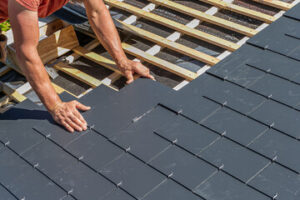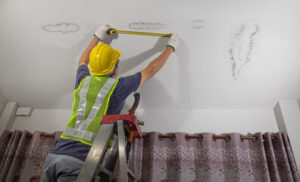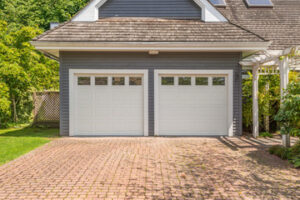Solar panels are a great way to produce clean energy for your home. They are also affordable. You can find out more about how much it will cost to install them by looking at average energy prices in your area.

Silicon cells are paired with other components like backsheets and glass to create solar panels. A backsheet is made of an extra-durable polymer and a thin sheet of tempered glass filters sunlight into the silicon cells. Visit Website to learn more.
Silicon is the most common semiconductor material used to make solar panels. It is a natural resource, and its production uses less energy than a typical household electric appliance does. Additionally, it generates clean energy without producing any harmful byproducts. The glass cover of a solar panel is also made from silicon, as well as the aluminum that makes up the frame. These materials are abundant, making it easy to produce solar panels at a reasonable price.
A solar panel is comprised of solar cells that convert sunlight into electricity. These cells are then encapsulated and soldered together into modules. The modules are then framed by a back sheet that protects the solar cells. The back sheet is often made of Mylar or Tedlar, a type of polymer known for its resistance to the elements and its ability to handle high temperatures.
The first step in the process of making solar panels is to turn silicon dioxide into metallurgical-grade silicon (MGS). This requires very high temperatures, which are generated by burning coal. China is the world’s biggest producer of MGS, and Xinjiang in particular has abundant coal resources.
Once the MGS is produced, it can be turned into p-type or n-type silicon for use in solar cells. To create p-type silicon, manufacturers add atoms of boron or gallium that have one less electron than the surrounding silicon. This causes a gap in the crystal structure that can be filled with phosphorus to conduct electricity.
N-type silicon is created by adding boron or gallium to pure crystalline silicon. Once the p-type or n-type is made, a layer of anti-reflective coating is applied to each cell and narrow slits are cut into it to funnel the flow of electricity.
These slits are soldered to metal connectors that are then linked together into modules. These modules are then grouped into panels and framed by a back sheet and a glass cover. Each panel is bonded to an aluminum frame using ethylene vinyl acetate glue.
The final stage is to install the solar panels on your roof. Most residential deployments utilize fixed solar panels, which are mounted at a tilt angle that matches the sun’s movements throughout the day and seasons. More sophisticated installations use motor-driven tracking systems to orient solar panels toward the sun and maximize efficiency.
They’re more efficient in cold weather
Solar panels can generate electricity even in winter – and many homeowners are surprised to learn that they actually operate better in colder weather. The reason is that lower temperatures reduce resistance and allow electrons to flow more freely, which increases the voltage that a panel produces. The inverse is true of hotter weather, where electrons are more likely to lose energy through heat.
The truth is that there’s no such thing as the ideal temperature for solar panels, because the environment around a home changes constantly and solar panel performance also depends on the orientation of the roof. Solar panels that are exposed to the sun and not shaded by trees can produce power in nearly every climate. However, solar panels should be kept clear of snow, as it will interfere with the panel’s ability to capture sunlight.
Fortunately, it’s not as difficult to keep your solar panels free of snow as you might think. The dark surface of a PV module accelerates snow melt, so that it often falls off the panel before causing any harm. Moreover, the installation racks on which solar panels are mounted are often tilted up to 30 to 45 degrees, which keeps them away from the roof and encourages snow to fall off rather than accumulate.
In addition, most PV modules have a backsheet that protects the underside and the cells from rain, hail, wind, and critters. This protective layer is usually made from polymer materials that are durable and have insulating properties. The final piece of the puzzle is an aluminum frame that helps support the panel and keep it secure on a roof. This frame is also designed with electrical insulation, which prevents electric current from passing through the panel to surfaces outside the system. This is a great feature to have for a safe and long-lasting solar panel.
They’re easy to install
Solar panels are a great way to generate electricity without the need for fossil fuels. They are also easy to install and require little maintenance once installed. They are a good option for individuals who want to save money on energy bills and reduce their environmental footprint. In addition, many states and local governments offer incentives to encourage homeowners to use solar power. If you’re interested in going solar, you can start the process by comparing quotes on the EnergySage Marketplace. You’ll be matched with pre-vetted solar installers in your area who can help you choose the right system for your home.
Before beginning the solar panel installation process, make sure your roof is suitable for a PV system. It should be free of leaks and must be able to support the weight of the solar panels. Additionally, the roof should be south-facing and at least at a 30 degree angle to obtain the most amount of sun exposure throughout the year.
Once your roof is ready, you’ll need to prepare the racking system on which the solar panels will be mounted. This can take about a day to complete. After completing this step, you can begin installing the panels and wire them together using the MC4 connectors that come with your system. It’s important to follow the manufacturer’s instructions carefully when connecting the panels. You can choose to wire them in parallel or series. Series wiring allows you to adjust the voltage and amps of your solar array according to the properties of your charge controller.
Once you’re done, you can test the solar panels in a flash tester to ensure they meet their projected outputs and efficiencies. The tests simulate standard conditions (1000W/m2 irradiance, 25°C cell temperature, and an air mass of 1.5g). If the solar panels pass, they’re ready for shipment. Solar panel systems don’t require much maintenance once they’re installed, but you should periodically check the generation capacity of your system to ensure that it is working properly. If it’s not, you can contact a professional to fix the problem.
They’re affordable
The solar energy industry is booming, but the cost of solar panels can be prohibitive for many homeowners. However, solar power is a great option for people who are willing to make a long-term investment. It can take between six and 12 years for a system to pay for itself, depending on electricity costs, state incentives, and available rebates. To reduce the upfront expense, solar energy companies offer financing options that allow customers to pay for the system over time.
Solar panel prices vary by manufacturer, model, size, efficiency, and warranty. However, the average price per watt of solar panels is falling due to competition and falling materials costs. Additionally, federal tax credits and other incentives can help to lower the cost of solar systems.
To determine the best solar panel for your home, it’s important to compare the wattage output, efficiency, and size of different models. For example, Canadian Solar offers affordable solar panels with a 25-year warranty and a module efficiency of around 17%. The company also provides a variety of financing and leasing options to help you save money.
Another factor to consider when comparing solar panels is the type of mounting system and glass used. For example, solar systems with dual-axis trackers can maximize sunlight exposure throughout the day and can improve efficiency by 25% to 45%. However, these systems can also be more expensive to install and may require a professional to monitor and maintain them.
When looking for a cheap solar panel, be wary of second-hand options. While they can be a good choice for some people, these panels are often less efficient and can have hidden problems such as microcracks and other defects that are invisible to the naked eye. Additionally, a second-hand solar panel might not be eligible for the tax credits and other incentives offered by most solar energy providers.








